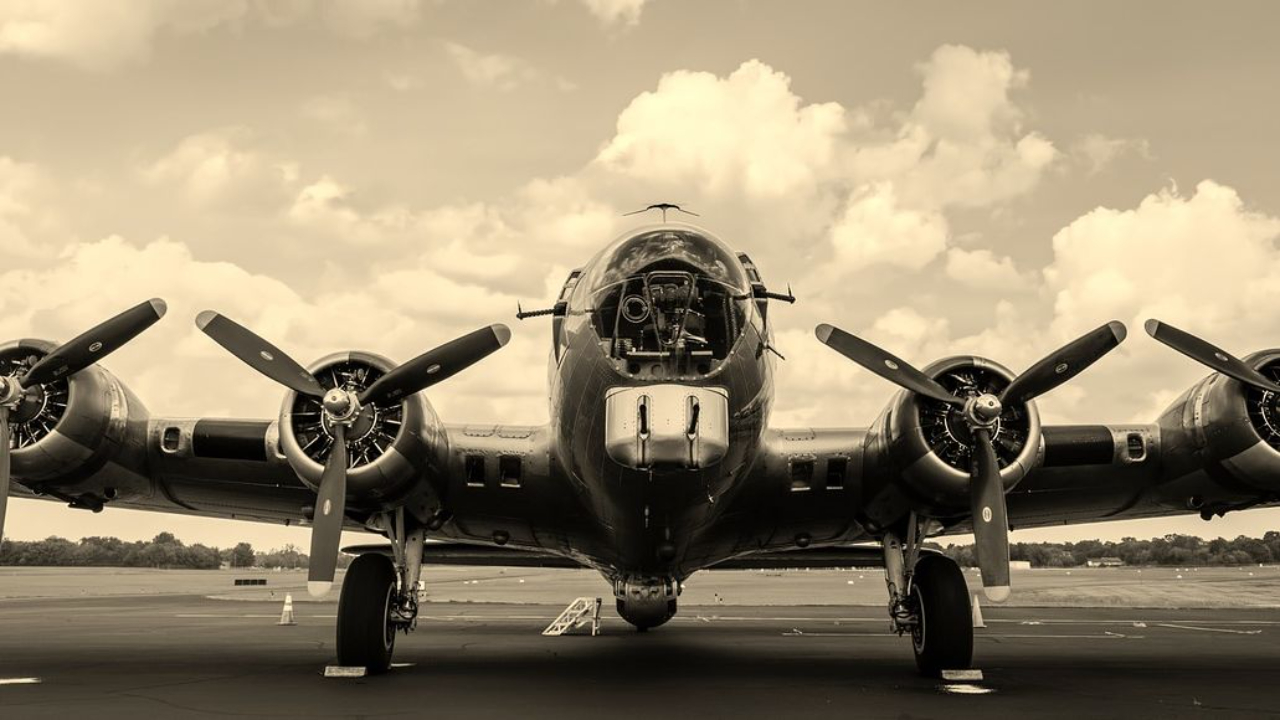Engaging World War II Lesson Plans and Resources

When it comes to teaching about World War II, using primary sources, well-crafted discussion questions, and a thorough timeline of events, among other resources, help your students gain a deeper understanding of this pivotal moment in world history!
Whether you're teaching American history or world history, especially a complex and wide-ranging topic like World War II, you don't want to just convey facts and dates to your students. It's about bringing the past to life and engaging students in critical thinking and analysis.
A well-thought-out, well-designed, and immersive WWII lesson plan that incorporates various learning elements while going beyond the traditional textbook approach is essential.
Not only does it help ensure that students understand the important events and their significance but also helps students better connect with the people who lived through the war and that time period.
In this article, we'll explore how to use or create helpful lesson plans on World War II that includes the use of primary sources, discussion questions, student activities, supplemental video lessons, as well as other engaging and easy-to-use resources!
Background Information
Prior to starting a lesson on World War II, it's crucial to remind your students of some important background information of the time period, namely:
The Treaty of Versailles
The treaty which ended World War I, and imposed heavy reparations and restrictions on Germany, also caused many Germans to feel resentful and humiliated while at the same time had also stifled the German economy.
Rise of European Dictators
The treaty of Versailles had also banned Germany from having a military, a great source of national pride, and when combined with a faltering economy and demoralized nation, it allowed the rise of a charismatic leader, Adolf Hitler, the leader of the Nazi Party, who capitalized on this anger and rose to power in 1933. Hitler would become the leader of Nazi Germany with virtually unlimited power and put in to motion during the late 1930s his aggressive expansionist policies while using Nazi propaganda, such as propaganda posters, that promised to make Germany great again.
Meanwhile, Benito Mussolini, another charismatic and brutal European dictator was ruling over Italy, Like Hitler, Mussolini protect his power through the use of brutal tactics to eliminate and quell political opposition to his government and to expand Italy's sphere of influence. Mussolini would form an alliance with Nazi Germany and Japan known as the Axis Powers.
Download a FREE WEEK of lesson plans HERE!
U.S. Involvement
Upon providing your students with the important background information outlined above, I like to delve into how the United States government remained neutral at the start of World War II, but that it was after the bombing of the U.S. naval base at Pearl Harbor by Japanese forces in 1941, that President Franklin D. Roosevelt declared war on Japan, which, in-turn, led to Germany and Italy declaring war on the U.S.
The U.S. military played a significant role in the global conflict, with American soldiers fighting in Europe, Africa, and the Pacific theaters and this can be conveyed throughout a well-deigned World War II unit. For example, instead of having just one or two specific lessons that exclusively focus on U.S. involvement in the war, I prefer to teach my students about the United States' role in WWII throughout the course of several lessons. Lessons that aren't specific to say the nations involvement in the war, but rather things like the Pacific or European Theatres of War which naturally offer up an excellent opportunity to teach your students of the many different aspect of the United States' involvement.
Japanese Internment
One of the darker aspects of U.S. history during World War II, however a crucially important aspect at that, was the internment of Japanese Americans. Following the bombing of Pearl Harbor, the U.S. government issued Executive Order 9066, which authorized the forced relocation and internment of Japanese Americans living on the West Coast. Students can examine primary sources such as government documents, photographs, and personal accounts to understand the impact of this policy on Japanese Americans.
This is an increasingly significant and sensitive topic to teach your students about. The teaching of the history of World War II, from an American perspective, has often overlooked this component, but as state standards have been revised in recent years to highlight and include this aspect of WWII, as they should, it's important to highlight to your students how Japanese-Americans were treated at internment camps, why there were forced there, and how the U.S. government has responded to the treatment of this group of U.S. citizens in the years and decades since WWII.
Nazi Germany
To understand the impact of Nazi Germany on World War II, I strongly recommend having students examine various primary sources such as propaganda posters and concentration camp survivor accounts. For example, the book "The Diary of a Young Girl" by Anne Frank is an excellent source. I also try to incorporate into my lesson plans a brief study of the leadership of Hitler and his command of German forces during the war, including the invasion of Eastern Europe and the atrocities they committed against Jews in Nazi concentration camps (ie., the Holocaust).
Significant Events
There are a slew of significant events when it comes to World War II and the question is, what should you cover with your students and make sure are covered in your lesson plans?
For middle school students, for example, I make sure to address the following important events:
- Causes and effects of the Nazi invasion of Poland
- Japanese bombing of Pearl Harbor
- The invasion of Normandy (D-Day)
- Battle of the Bulge
- VE Day
- Pacific Theatre (specifically the Battle of Midway and Battle of Iwo Jima)
- Causes and effects of the atomic bomb being dropped on Hiroshima and Nagasaki
- Nuremberg Trials
For younger students, say 5th grade and below, I provide students exposure to the "core" aspects of WWII. For instance, the causes and effects of the attack on Pearl Harbor, U.S. and allied involvement in Europe (ie., D-Day), the bombings of Hiroshima and Nagasaki, etc.
Regardless of grade level, I love having my students create a timeline of significant events, noting key dates and their significance to the war. When it comes to important events, it's also a great opportunity to incorporate the use of primary sources such as radio addresses and newspaper articles which students can analyze in order to better understand the reactions of world leaders and the general public to these events.
Roles of Great Britain and Soviet Union
While the U.S. certainly played a significant role during WWII, it's important to convey to students that U.S. allies during WWII, in specific, Great Britain, led by Prime Minister Winston Churchill, as well as the Soviet Union, led by Joseph Stalin, played vital roles in the allied war effort against the Axis Powers.
I always try to provide my students with some insight to how the Soviet Union fought on the Eastern Front, while Great Britain (and other nations like Canada) commonly fought alongside American forces in the Western Front. It's important to convey to your students that both Great Britain and the Soviet Union were critical in the defeat of Nazi Germany, Mussolini's Italy, and Imperial Japan. I often like to have students explore the actions of these countries during the war and the challenges they faced, in addition to those faced by the U.S.
WWII Student Activities
Now that we've covered the core components to cover in a WWII lesson plan unit, it's time to make those lesson plans engaging and interactive for your students! Student activities such as creating propaganda posters or writing letters from the perspective of soldiers or civilians during the war can really help your students comprehend the historical context of World War II and the gravity of the time period.
Discussion Questions and Topics
I ALWAYS try to insert strategically placed discussion questions and topics into my presentations on WW2. I find that a well-designed discussion-based question (DBQ) is an effective and easy way to engage students and encourage them to think critically. Such questions can help highlight to your students the importance of various individuals, events, or groups of people during WWII. For example, how minority groups like the Tuskegee Airmen or the Navajo Code Talkers contributed greatly to the U.S. war effort. Another great way to utilize discussion questions and topics when it comes to WWII is to explore how the role of women and their many important contributions significantly aided the U.S. war effort and how their contribution on the Homefront were vital to U.S. and allied victories on the battlefield.
Related Article: Amazing PowerPoints for Teaching WWII
Video Lessons and Curriculum Materials
One of my favorite ways to supplement lesson plans, is with various age-appropriate videos. Often times, I like to share with my students relatively short, well-crafted videos from YouTube, say 2 to 3 minutes long, that supplement the learnings of a specific lesson.
I also like to share with them longer videos, for example after completing all of the lessons of my World War II unit, I like to have them watch 10+ minute-long video that encompasses a relatively comprehensive review of WWII in an entertaining, yet educational manner. Pro Tip: such videos are also great for when you need to have a substitute!
In addition to videos, other curriculum materials that provide background information and context that pertain to World War II, a variety of resources are available online, including interactive maps and timelines that can help students visualize and understand the complex global conflict!
Related Article: Top 13 WWII Movies for in the Classroom
I hope this article has provided you with some ideas and insights when it comes to World War II lesson plans and resources!
A well-designed and thought-out lesson plan unit on World War II will help your students understand the important historical and social significance of this time period!
By examining primary sources, engaging in student activities and discussions, and supplementing with video lessons and various curriculum materials, you'll be providing your students a comprehensive learning experience.
Additionally, by exploring the impact of World War II on different groups of people for instance, Japanese Americans, and examining the ethical questions surrounding the use Japanese internment camps, your students will gain a deeper understanding of the complexities of this global conflict and its lasting impact on world history.
Have a look at my curriculum bundles HERE!
Imagine...
-
Spending more time on teaching and less on lesson plans
-
More time on nights and weekends to share with friends and loved ones
-
No longer endlessly searching for amazing lesson plans and resource



I hope you've been inspired by this article! Thank you so much for reading,
-Jillian (a.k.a. the "Lesson Plan Guru")
Related Articles:
- Top 7 Best Apps for Teaching History
- Top 13 WWII Movies for in the Classroom
- High-Quality, User-Friendly PowerPoints for Teaching WWII
- 10 BEST WWII Books for 5th Graders!
Receive a FREE Week of Lesson Plans!
Join my mailing list to receive exclusive offers and promotions, the latest tips, and news on product updates!
Don't worry, your information will NEVER be shared.
I hate SPAM too and will NEVER sell it to a third-party. EVER








